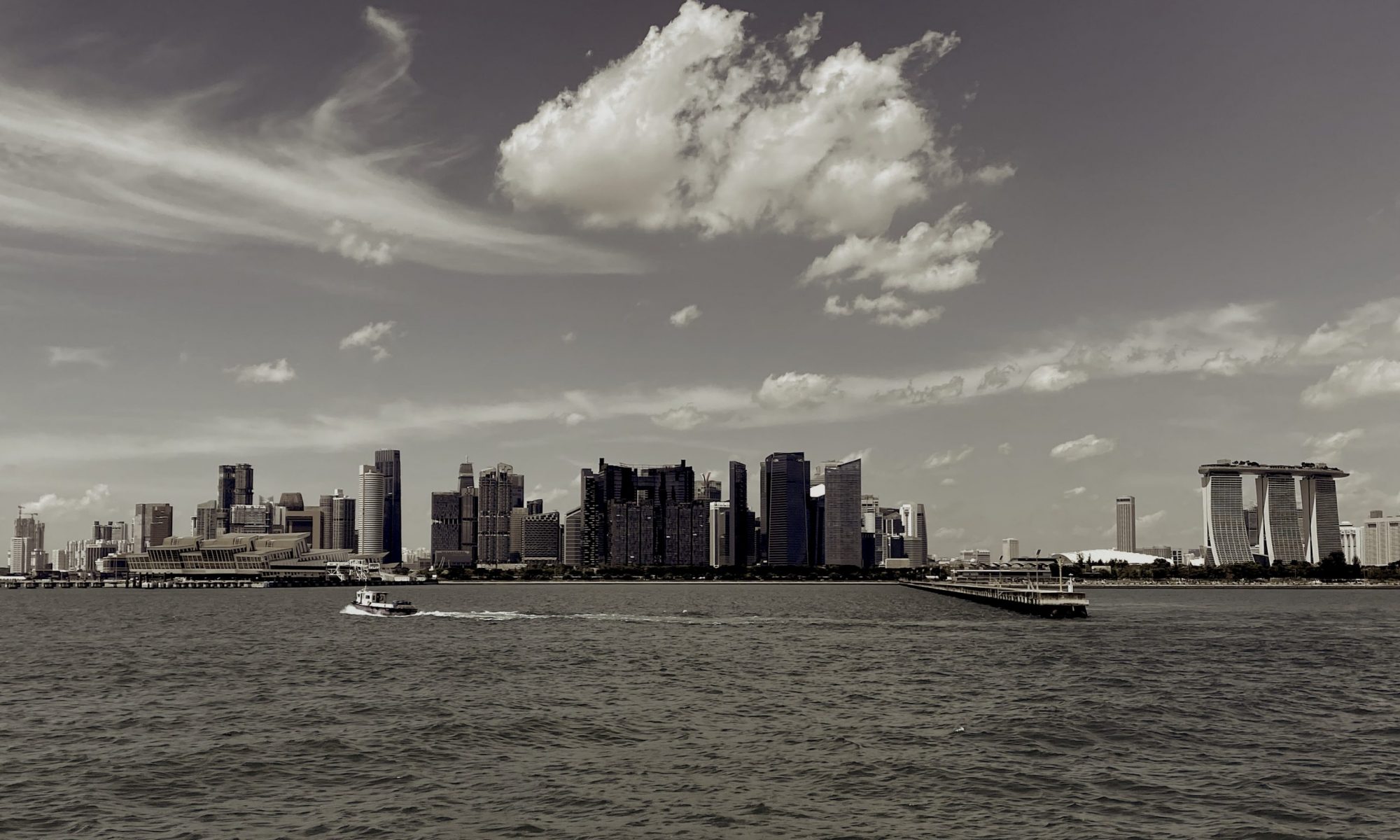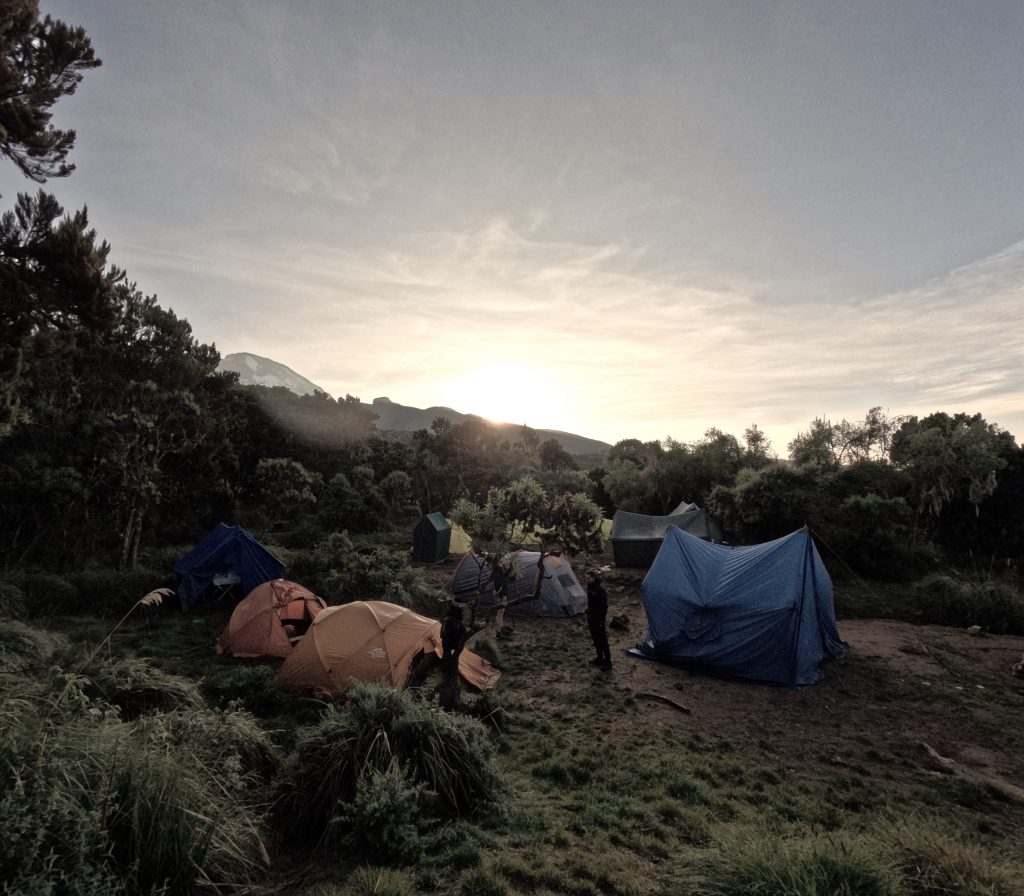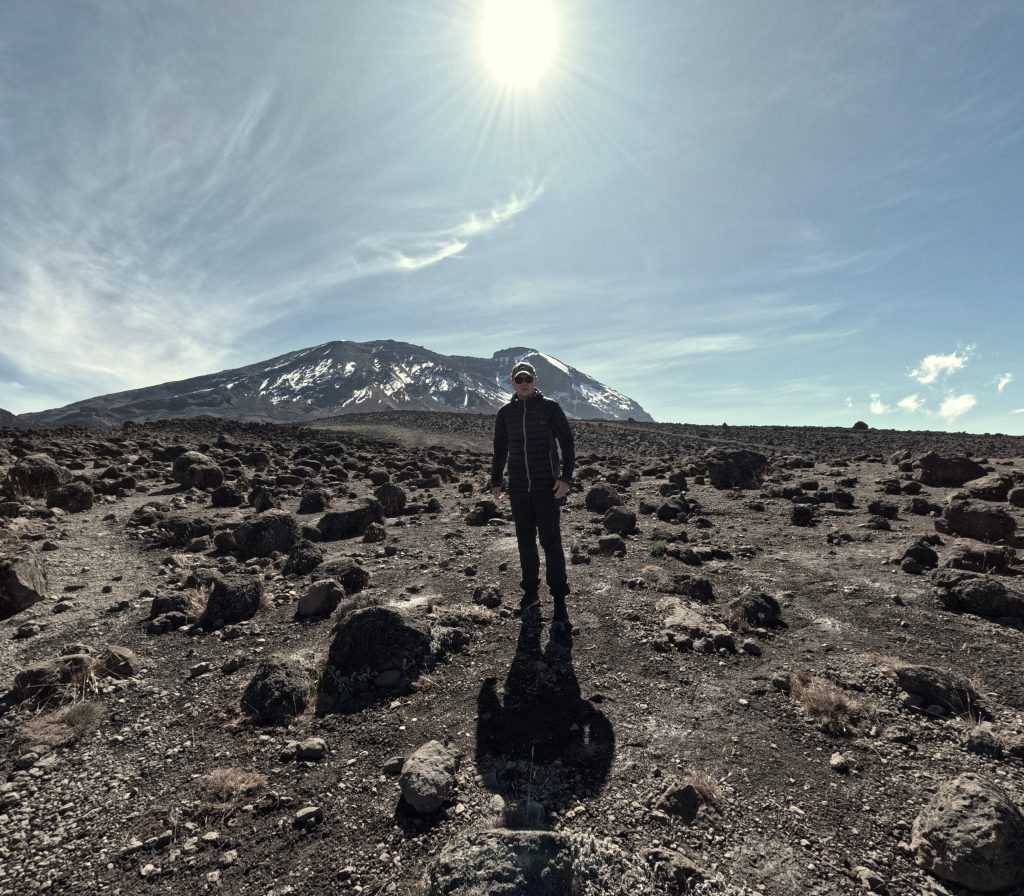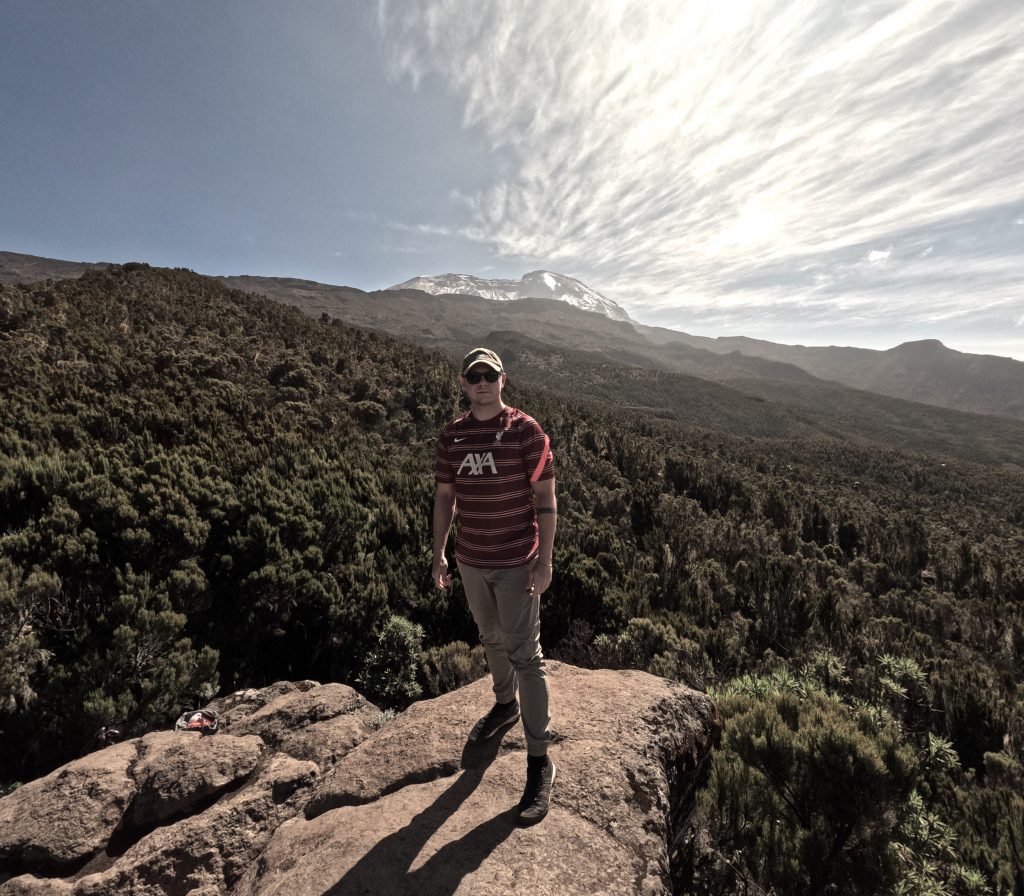Zimbabwe, Zambia, Malawi, Zanzibar, Tanzania: The journey through East Africa had been an incredible prelude, but it was merely the opening act for the grand spectacle that awaited us — Mount Kilimanjaro, the majestic monolith of Tanzania and of Africa.
During the past few years, Dennis and I had casually discussed the idea of conquering Africa’s highest peak several times. Initially, it was more of a fantasy, a jest, not taken seriously. However, one day, we decided to delve deeper into this notion, conducting some extensive research. The outcome: we merged the climbing ambition with our East Africa travel plans. And so, here we were – two naive guys arriving at the hotel where we would meet our guides, the invaluable support on our quest to reach the Uhuru Peak.
During the orientation interview, I began feeling increasingly uneasy. The more we delved into the details, the more it became apparent that I was ill-prepared for this mountainous challenge. “Do you have proper boots?” Yes! “Do you possess long underwear?” Yes! “Do you have a minimum of four layers, including shirts, long sleeves, and a jacket?” Yes! Three questions, three answers, three falsehoods. (Can you spot the boots in one of the pictures below?)
We wanted to get a good night’s sleep before embarking on our journey to the summit. The plan was for a 5-day ascent and a 2-day descent. Before going to bed, Dennis and I shared our doubts. For the first time, it became realistic to us that we could fail, that we might not make it to the top.
After 10 hours of beauty sleep and a hearty breakfast, the guides picked us up. We found ourselves in a van, accompanied by our two guides, eight porters, a chef, and a waiter. Yes, you read that correctly, a chef and a waiter! What can you expect? The well-heeled tourists have to be as comfortable as possible. (Just kidding!) Only one person was missing: Ramon, a 65-year-old Spanish right-wing conservative ex-military man with a great sense of humor. After picking him up, our tour group was complete and ready for take-off. Cabin crew, please prepare for departure and fasten your seatbelts: We are going up!
As we set foot in the foothills of Kilimanjaro, its towering presence loomed before us, dominating the landscape with awe-inspiring grandeur. On our first day, we finished a 10.7-kilometer trail, which was quite manageable. By the end of the day, we had reached Machame Camp at 2850 meters. It was a fantastic start, with sunny weather, pleasant warmth, and a picturesque view from the camp. We were eagerly anticipating the days ahead, though we had no idea what to expect!
The second day of the ascent began at 6 am. The goal for the day was to cover 5 km and gain 1000 meters in altitude. The trail was rather steep and challenging, with the cold and wind intensifying as we reached Kilimanjaro’s alpine desert. It was on this day that we truly appreciated the incredible effort put in by all the porters. Each of them carried a large bag and another sack on their head. For instance, one of our porters was responsible for carrying the three large bags belonging to Dennis, Ramon, and me. Sometimes, you would spot them sitting somewhere utterly exhausted. If you ever find yourself on a mountain trail where porters are assisting tourists by carrying their belongings, you’ll notice they won’t turn down any food offered to them, even if it’s just a handful of nuts!
By lunchtime, we had reached a camp at 4000 meters to take a brief rest. The primary purpose of the camp was to help us acclimatize to the higher altitude. Our guides informed us later that day that we would be descending to 3600 meters again. After arriving in the camp and a short and restful nap, we went for a brief walk through the camp to climb onto a rock – also with the aim of further acclimatization. We spent quite some time there, getting to know each other better, as we were able to engage in deeper conversations for the first time. It was impressive how well-informed our guides were about the news in Europe, particularly the Russian invasion in Ukraine. In contrast, we realized how little we knew about Tanzanian news. Back in the camp, we were treated to a beautiful sunset over Mount Shira, one of the three extinct volcanoes of the Kilimanjaro massif. While watching the sunset, I took my last “shower” for the next couple of days.
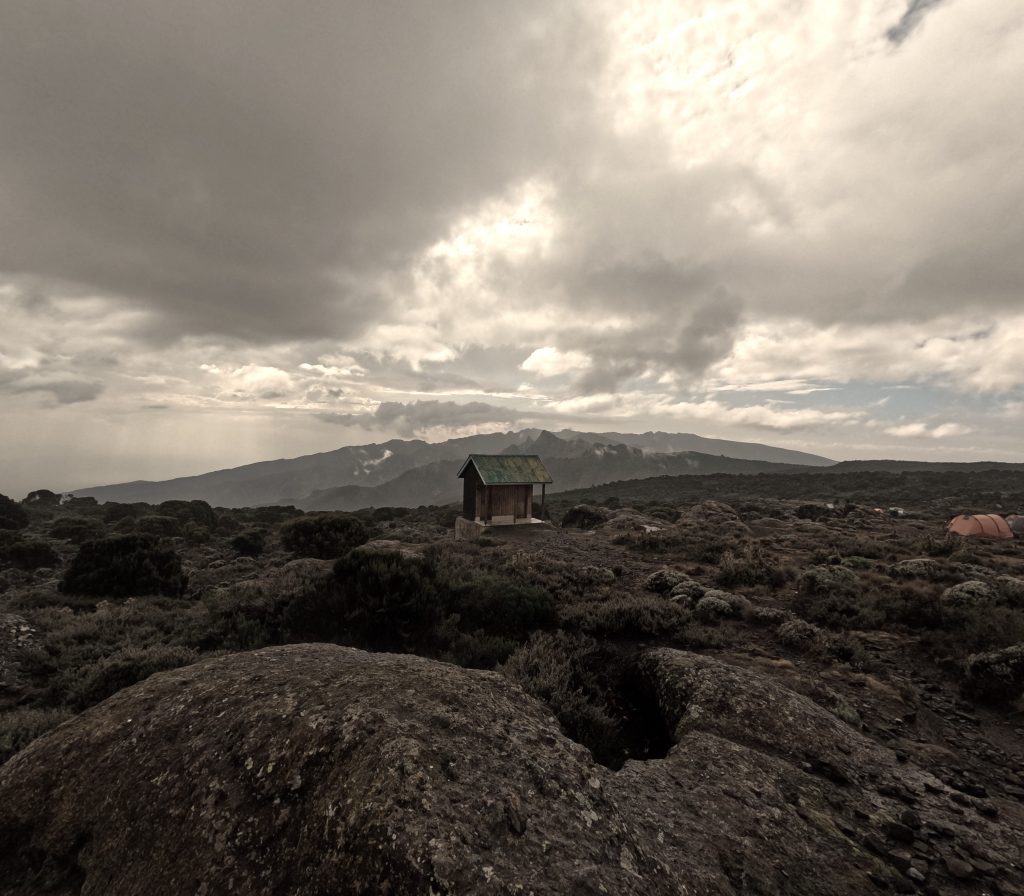

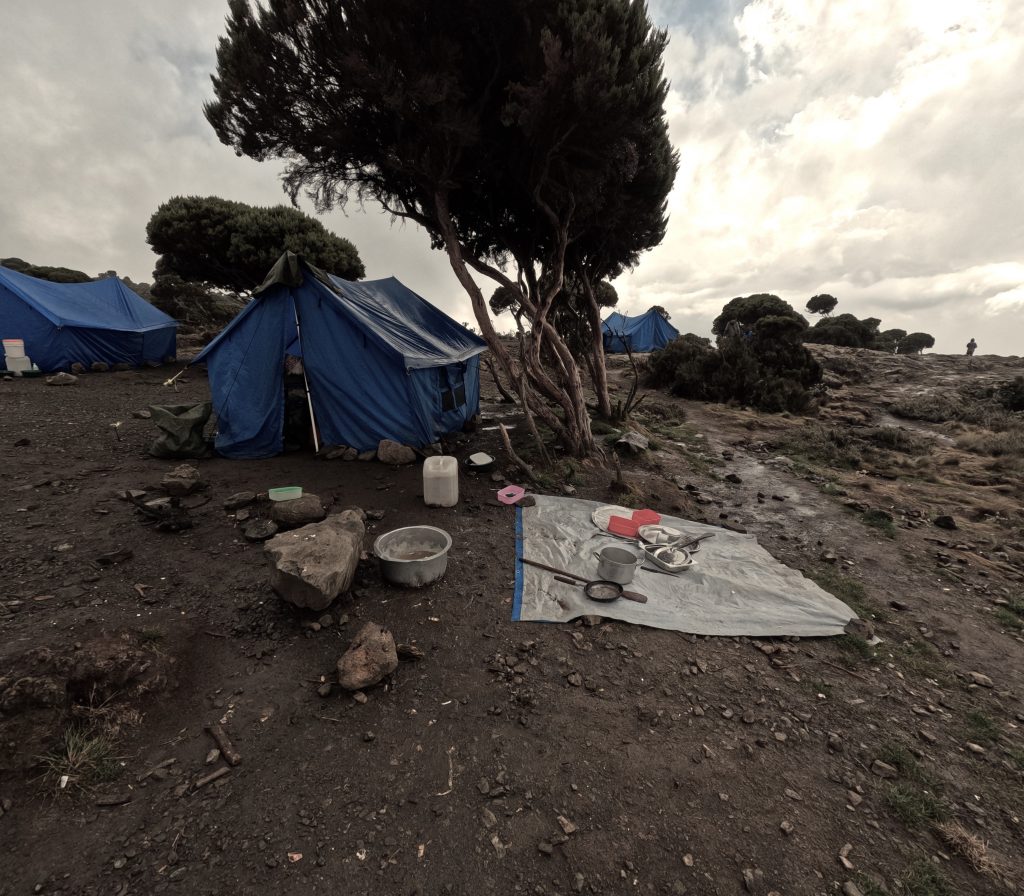
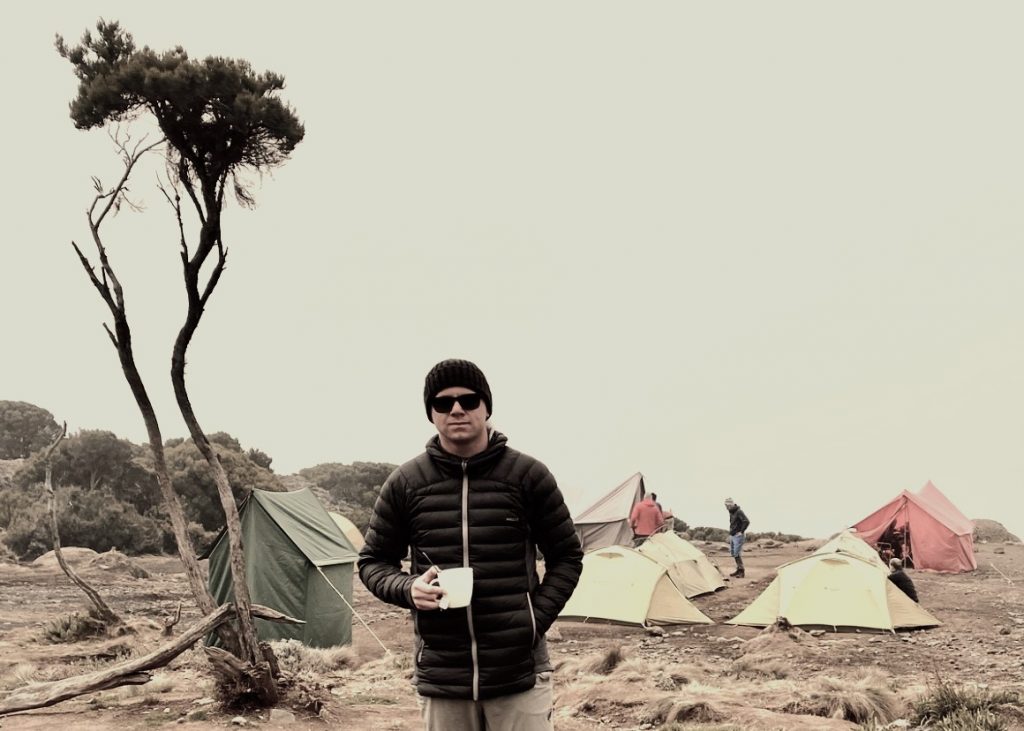
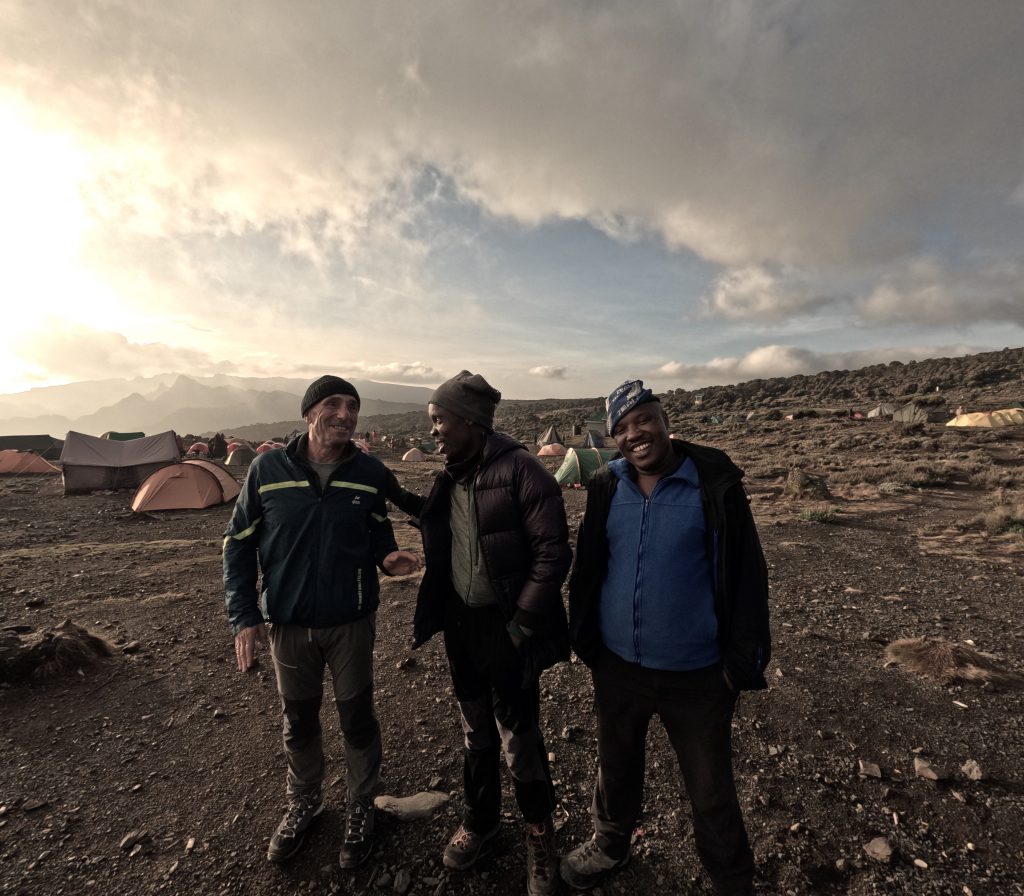
The next morning, we woke up to the beautiful chant of other tour groups and a wonderful view of Mount Kibo. The Kilimanjaro massif essentially consists of three extinct volcanoes, the highest of which is Kibo (“the bright one”) – our goal! After 4.5 hours through the alpine desert, we arrived at the Lava Tower camp. At this time, we found ourselves at 4600 meters above sea level. I realized that each day of our journey challenged us in different ways. Sometimes it was due to the temperatures, the distance, the terrain; other times it was more about the steepness, the time, the altitude. In this camp, it was the first time Dennis experienced some altitude sickness, with a headache and feelings of nausea. After the break, I felt a bit dizzy—uncertain whether it was due to the altitude or the smell in the restroom!
The path to the night camp involved a series of 100-meter ascents and descents, which were incredibly exhausting and tiring. However, we persevered and arrived at Barranco Camp, situated at an altitude of 3960 meters. Upon reaching the camp, the guides showed us the trail for the upcoming day, which they referred to as “The Wall.” The Wall is a very steep part of the route.
Upon waking up, I saw people already climbing up, and I wondered why there was a traffic jam at one point. I would figure it out a couple of hours later. We had two options: give up or leap over some rocky gorge. Everyone had to push their limits, which was the reason for the congestion at this point. Not only at this point, but throughout the entire Wall, I experienced a sense of psychological stress. In the end, it took us 4 hours to ascend the 240 meters of the Wall. We truly deserved a break with a stunning view over the vast landscapes of Tanzania and Kenya, with Mount Kenya in the background.
At this location, we were once again able to engage in deeper conversations with our guides. One of them was Anton. He is a father of two daughters and a son. As a family, they live in Moshi, near Kilimanjaro. Back in the day, he started as a porter and eventually became a guide. It was a significant step because as a porter, you earn a daily salary of $5. As a guide, you triple your income, and you don’t have to carry all the equipment like the tourists’ bags, tents, cooking utilities, and groceries. In his ten years of working as both a porter and a guide, he has ascended to the summit more than 400 times. He shared with us that under his guidance, 9 out of 10 people successfully reach the summit, while the general success rate is only 50%. He also recounted a tragic incident when a woman in her 30s had a heart attack right after the start of the climb. The group continued without being informed that the woman couldn’t be revived.
Anton’s dream is to become a tour operator, someone who organizes safaris and climbing tours for Mount Kilimanjaro and Mount Kenya. Since he works with people from all over the world, he’s interested in different cultures and lifestyles. He has traveled to Uganda and Kenya and has heard many stories from his grandfather and a classmate who was a refugee from Rwanda, particularly about the genocide in Rwanda. Due to his growing interest, he visited Rwanda in person to experience the country and learn more about its history.
Anton also expressed a strong desire to visit Europe, especially Germany. He has had some impressive experiences with German clients, finding them focused and strict, which left a lasting impression on him. He’s particularly excited about the prospect of visiting the Oktoberfest. Prost!
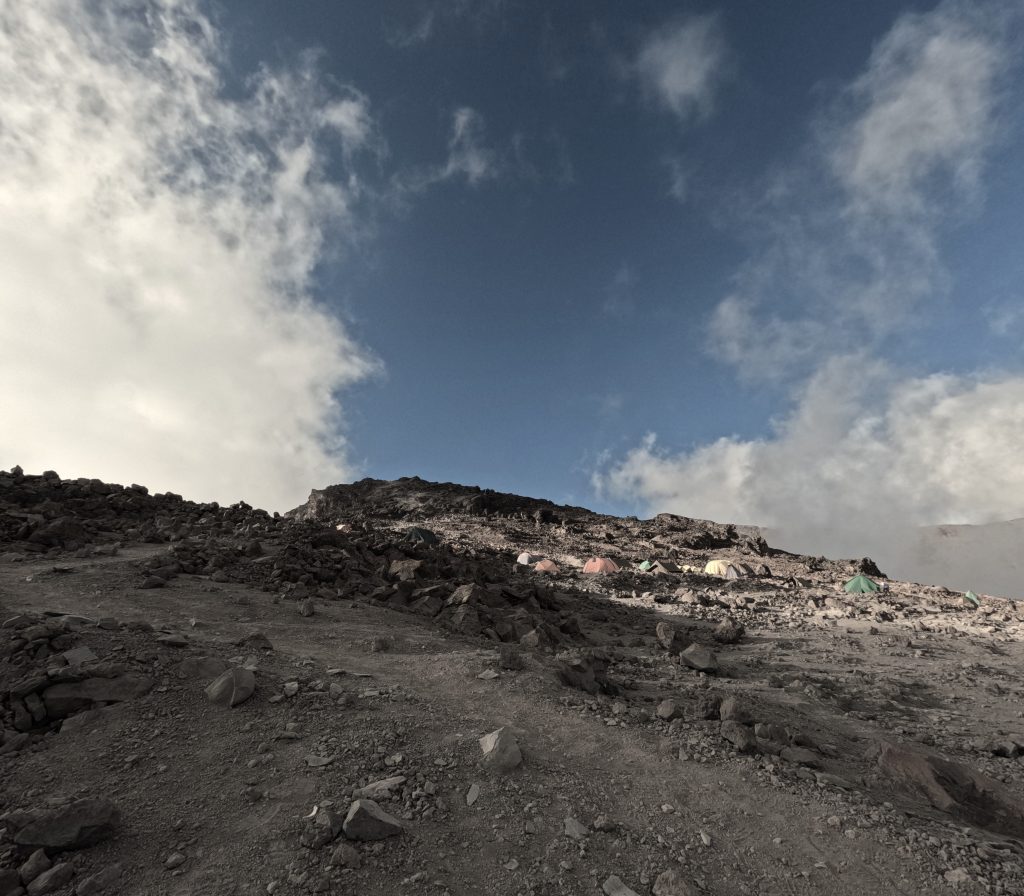
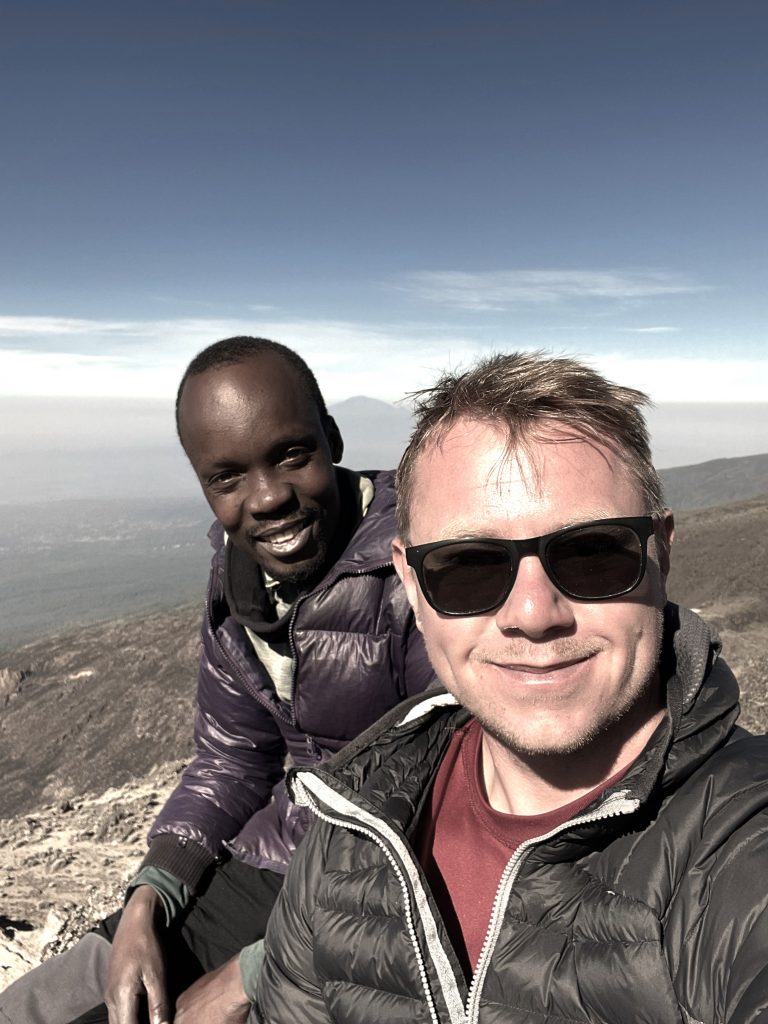


After that deep talk, we continued our journey, hiking up to the final camp before the summit night. At around 4 pm, we arrived at the camp. Dennis’s headache and dizziness got worse, and the fact that he started to vomit didn’t make things any better. I was feeling relatively okay, with a bit of pressure in the back of my head and that overall exhausting feeling. After dinner at 6 pm, we aimed to sleep as early as possible because we had to wake up at 11 pm on the same day. Our conversations in the tent were marked by sentences like “If I still feel the same when we wake up, I might not make it” or “I can see the possibility that my toes will freeze.” It was our lowest point, at 4673 meters. Nonetheless, at 11 pm, we woke up with only one goal: to reach the summit. We had 6 kilometers and 1222 meters of altitude ahead of us – around 6 hours of steep hiking to the summit. With very little energy left, we began the summit night in darkness. Unfortunately my headlamp powered off due to low battery after about 90 minutes.
Sometimes I felt like a robot, like a machine that was just putting one foot in front of the other. I couldn’t think, I couldn’t communicate. Dennis was still struggling with his altitude sickness, telling me that he would give up soon. That distracted me from my own struggle as I pondered how to change his mind. And then, suddenly and without any warning, I had to vomit due to physical exhaustion. After a short break and a Snickers, we continued, and I noticed that I was becoming more impatient, shouting, “Where is that Stella Point you’ve been talking about for hours?” At least, two minutes later, we reached that last junction before the summit of Kilimanjaro. From that point on, the last 45 minutes to the summit became somewhat easier.
The next 45 minutes, I started to realize that we would achieve our goal. We wouldn’t have been able to do so without the crew, without the massive support of the porters, the chef, the waiter, our guides, and the motivation from within ourselves and among Dennis, Ramon, and me. While taking the final steps to the summit, the sun began to rise, and at 6:21 am, I reached the Uhuru Peak, which is the highest point on the African continent. It was freezing cold, but the beautiful view, the positive emotions, and the awareness that we could face challenges like this, that we could push ourselves to new limits, made the struggle of our ascent entirely worthwhile. After 15 minutes, taking some pictures and shedding tears of joy, we began our descent because it’s not very comfortable to stay at the summit and, more importantly, not healthy due to the altitude.
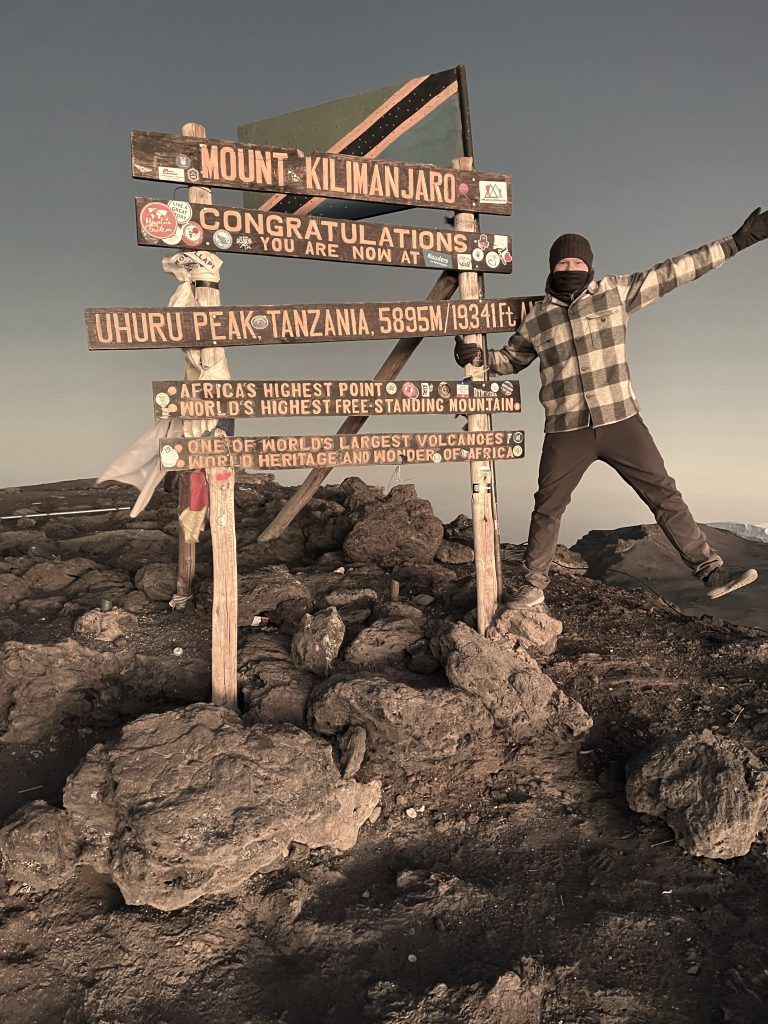
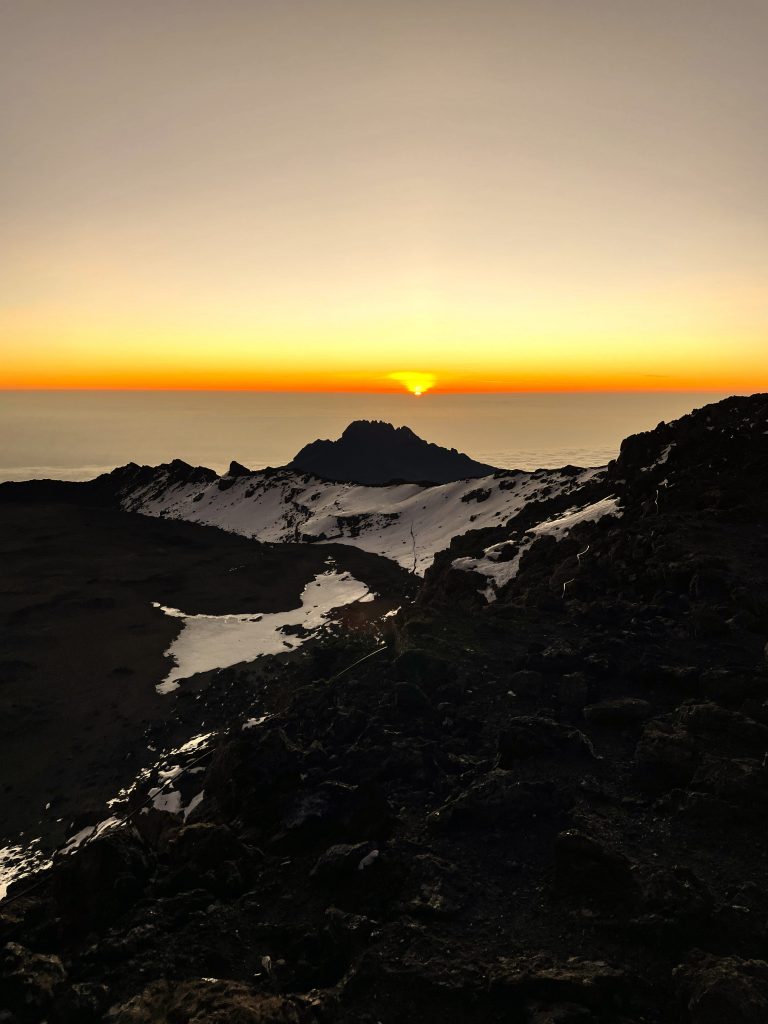
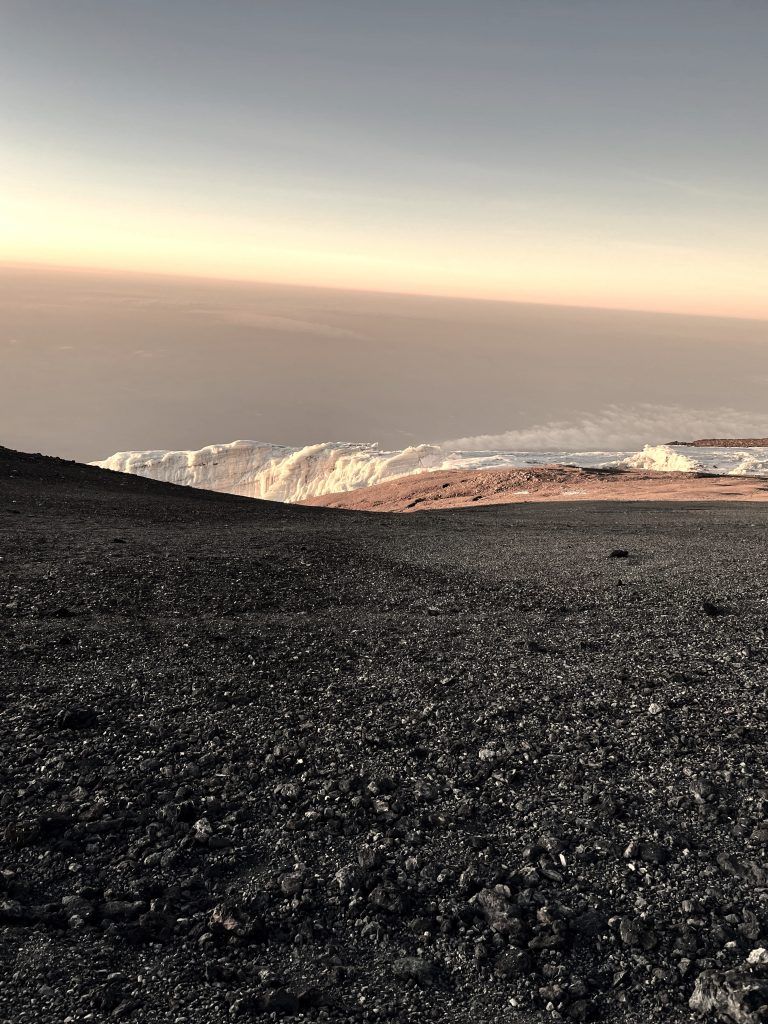
We were supposed to spend another night at 3600 meters, but Dennis, Ramon, and I decided that we just wanted to descend and sleep in a proper bed, enjoying our comfortable hotels for an additional night. At the camp where we had lunch, the guides checked our conditions and confirmed that we were going to descend the entire Kilimanjaro on that day, even though it had taken us 5 days to ascend. In the late afternoon, we reached the exit of the Kilimanjaro National Park, where we received our certification and had a small celebration with the crew to mark our successful achievement.
The next few days were characterized by recovery, enjoying the pool, and savoring delicious food before we headed back home. Overall, I would say everything was worth it. I’m sure you’ve realized that the ascent was not very enjoyable, but the feeling of accomplishment is incredibly strong within us and will be a part of us for the rest of our lives.
